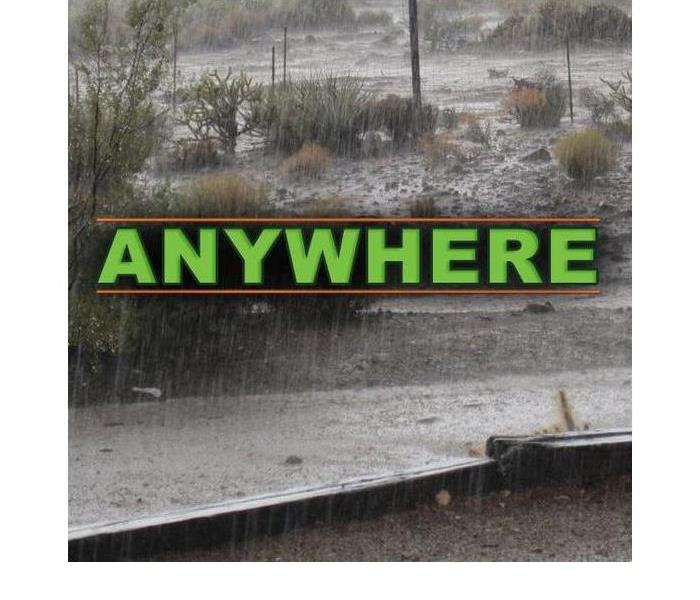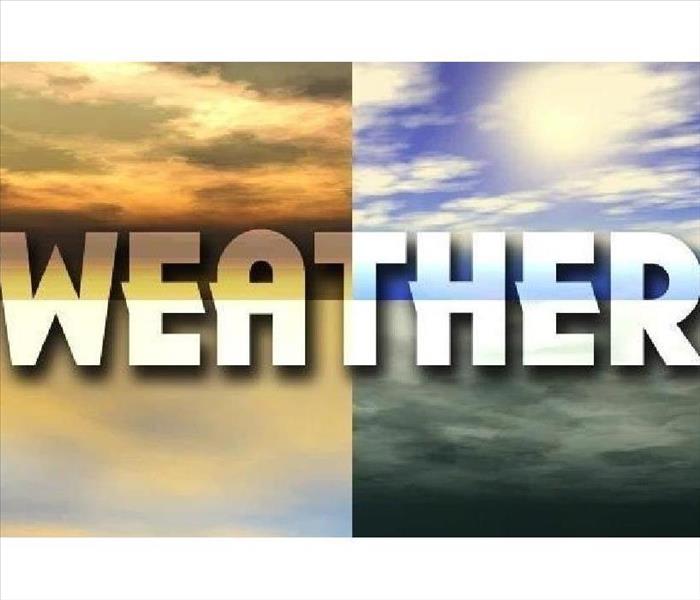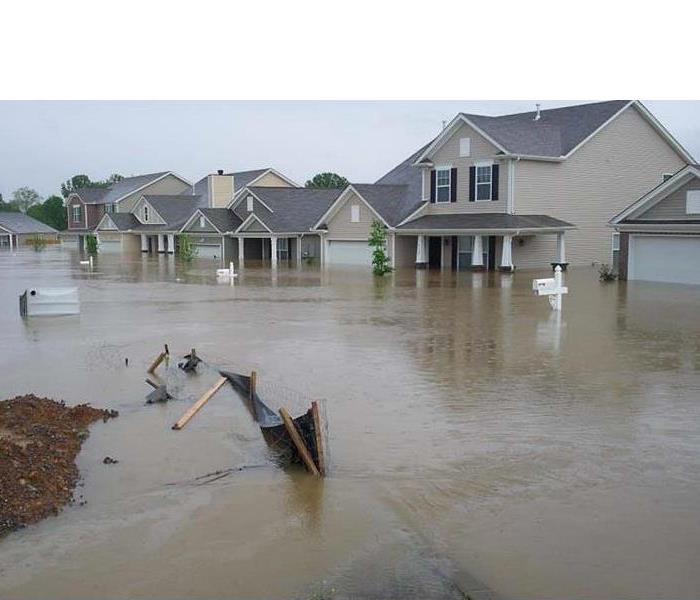Recent Storm Damage Posts
Winter weather is here in Central IL. Take steps to prevent problems.
2/2/2021 (Permalink)
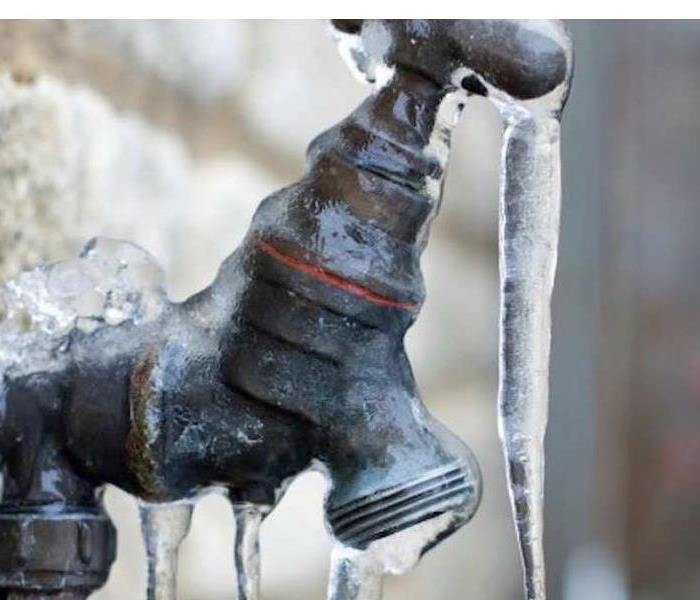 Don't let the winter weather bring you down.
Don't let the winter weather bring you down.
Why Pipe Freezing is a Problem
Water has a unique property in that it expands as it freezes. This expansion puts tremendous pressure on whatever is containing it, including metal or plastic pipes. No matter the strength of a container, expanding water can cause pipes to break.
Pipes that freeze most frequently are:
- Pipes that are exposed to severe cold, like outdoor hose bibs, swimming pool supply lines, and water sprinkler lines.
- Water supply pipes in unheated interior areas like basements and crawl spaces, attics, garages, or kitchen cabinets.
- Pipes that run against exterior walls that have little or no insulation.
How to Protect Pipes From Freezing
Before the onset of cold weather, protect your pipes from freezing by following these recommendations:
- Drain water from swimming pool and water sprinkler supply lines following manufacturer's or installer's directions. Do not put antifreeze in these lines unless directed. Antifreeze is environmentally harmful, and is dangerous to humans, pets, wildlife, and landscaping.
- Remove, drain, and store hoses used outdoors. Close inside valves supplying outdoor hose bibs. Open the outside hose bibs to allow water to drain. Keep the outside valve open so that any water remaining in the pipe can expand without causing the pipe to break.
- Add insulation to attics, basements and crawl spaces. Insulation will maintain higher temperatures in these areas.
- Check around the home for other areas where water supply lines are located in unheated areas. Look in the garage, and under kitchen and bathroom cabinets. Both hot and cold water pipes in these areas should be insulated.
- Consider installing specific products made to insulate water pipes like a "pipe sleeve" or installing UL-listed "heat tape," "heat cable," or similar materials on exposed water pipes. Newspaper can provide some degree of insulation and protection to exposed pipes – even ¼” of newspaper can provide significant protection in areas that usually do not have frequent or prolonged temperatures below freezing.
- Consider relocating exposed pipes to provide increased protection from freezing.
How to Prevent Frozen Pipes
- Keep garage doors closed if there are water supply lines in the garage.
- Open kitchen and bathroom cabinet doors to allow warmer air to circulate around the plumbing. Be sure to move any harmful cleaners and household chemicals up out of the reach of children.
- When the weather is very cold outside, let the cold water drip from the faucet served by exposed pipes. Running water through the pipe - even at a trickle - helps prevent pipes from freezing.
- If you will be going away during cold weather, leave the heat on in your home, set to a temperature no lower than 55° F.
Weather warnings in the winter tell you what to expect and what to do.
1/28/2021 (Permalink)
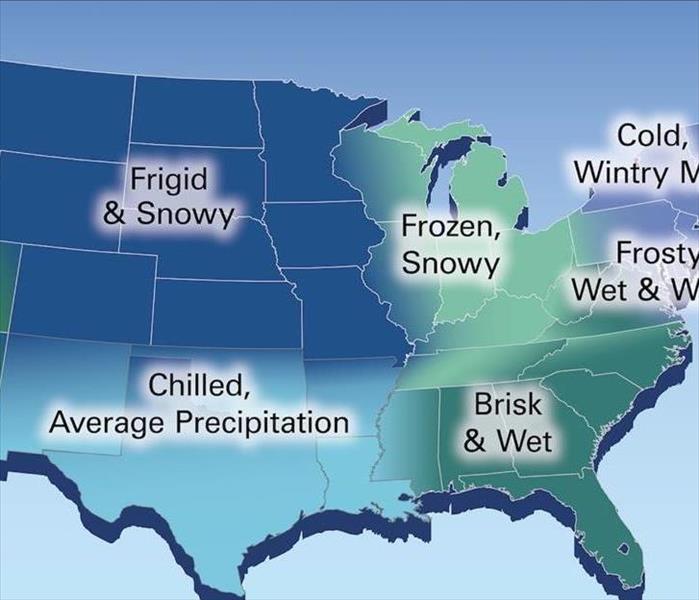 Be prepared!
Be prepared!
Knowing what your weather report is trying to help you avoid is important. The following are warnings that can be put out during the winter in Central Illinois. So when you’re keeping an eye on the weather channel or the online weather broadcasting, remember these terms.
Wind Chill Advisory: Wind chills of -15° to -24° expected. These winds could be dangerous.
Wind Chill Warning: Wind chills of -25° or colder are expected and can be life-threatening.
Ice Storm Warning: Dangerous accumulations of ice will appear. They will likely result in power outages, tree damage, and unsafe driving conditions.
Heavy Snow Warning: Snow accumulations of 6+ inches. Watch for hazardous travel conditions.
Winter Weather Advisory: Cold, ice, and/or 2 - 5 inches of snow are expected.
Winter Storm Watch: Severe winter weather, such as heavy snow or ice, is possible within the next day or two.
Winter Storm Warning: Severe ice and/or 6+ inches of snow are going to start soon/now.
Blizzard Warning: Expect heavy snow, strong winds, blinding snow, near-zero visibility, deep drifts, and life-threatening travel conditions.
When these warnings are sent out, it is important to get to cover and prepare to stay indoors for as long as is necessary. You can replace cars, you can repair your home, but your life isn’t worth risking.
SERVPRO of Decatur/Forsyth is here for any needs you may have.
Keep yourself and employees this winter with safety prevention!
1/28/2021 (Permalink)
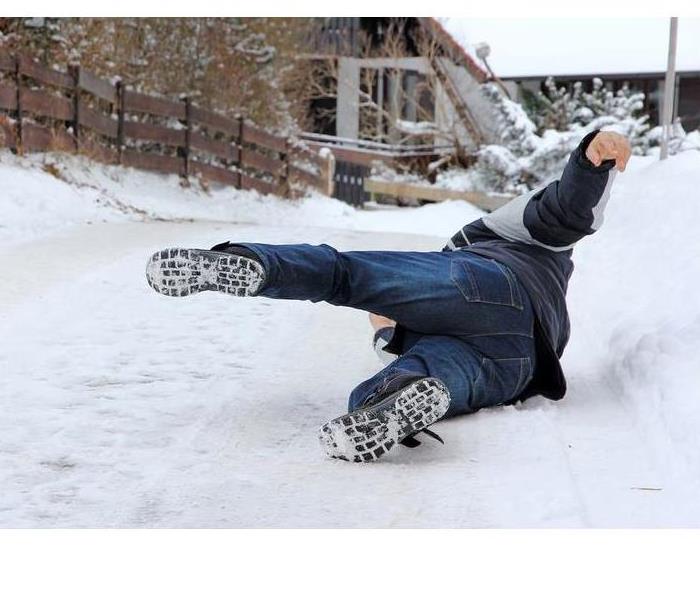 Prevention is key!
Prevention is key!
Winter provides many hazards that can bring danger to everyday people and employees working outdoors. These hazards include slipping and falling. With snow and ice covered conditions, you run the risk of taking major falls, which can lead to serious injuries.
Prevention
Education is essential in preventing winter weather-related injuries. Consider the following recommendations to prevent slip and fall injuries during the winter months:
- Wear the proper footwear that provides traction on snow and ice. Footwear should be made of anti-slip material; avoid plastic and leather-soled shoes or boots.
- Exercise caution when entering and exiting vehicles, and use the vehicle for balance and support.
- Try to walk only in designated areas that are safe for foot traffic. If you notice that a walkway is covered in ice, walk on the grass next to the sidewalk, which will have more traction.
- Avoid inclines that are typically difficult to walk up or down as they may be more treacherous in winter conditions.
- Take small steps to maintain your center of balance, walk slowly and never run. When possible, walk with your hands free to maintain your balance. And despite the cold temperatures, avoid putting your hands in your pockets. This will help you better maintain your balance and allow you to break a fall should you slip.
- Use handrails, walls or anything stationary to assist in steadying your feet.
- Look ahead to the path in front of you to avoid hazards.
- Test a potentially slippery area before stepping on it by tapping your foot on the surface first.
- Remove debris, water and ice from all working walkways.
- Steer clear of roof edges, floor openings and other drop-offs to avoid slipping hazards.
- Sand or salt surfaces covered by ice or snow to provide traction.
- Dry your shoes or boots on floor mats when entering a building.
If You Begin to Slip…
- Twist your body and roll backward to avoid falling forward and injuring your face.
- Try to relax your body when you start to feel your legs give way.
If you are carrying a load, throw it off to the side so it does not land on you when you fall. This will also free your arms to help break your fall.
These are some tips and tricks to help keep yourself safe this winter season. SERVPRO wishes everyone a safe and enjoyable winter, and hopefully these tips can keep you all free of injuries.
Storm Damage Prevention Tips
12/17/2020 (Permalink)
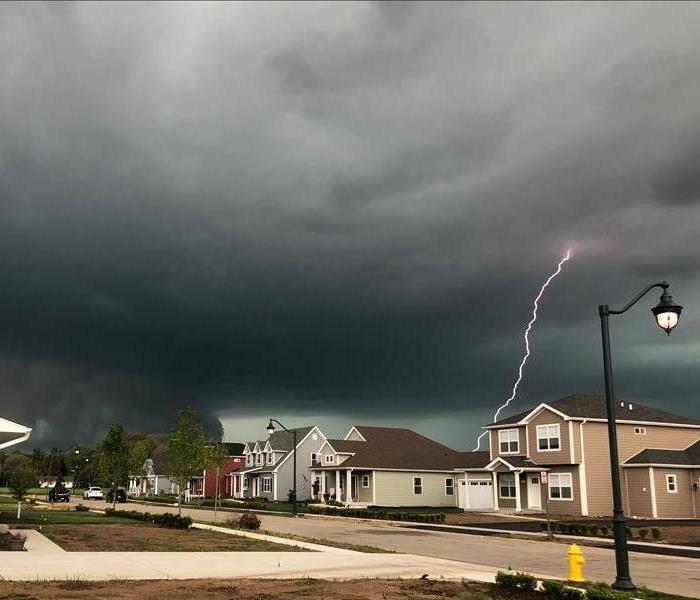 Be ready and prepared!
Be ready and prepared!
Storm Damage Prevention Tips for Homeowners
There is no doubt that keeping your property in excellent condition – well maintained and well protected (against intruders and thieves, as well as against the elements) – is your top priority as a homeowner. But while you may be living in a safe neighborhood or city where crime is not an issue, you cannot escape the weather, no matter where your home is – severe storms can happen anywhere in the country, throughout the year. Whether it’s a violent thunderstorm, hailstorm, snowstorm, hurricane, tornado, or any other natural disaster, your home can be badly damaged by the adverse weather conditions.
There is nothing you can do to stop a storm from hitting your area, of course, but there are many precautions you can take to minimize and even prevent the potential damage to your home. Most of these preventive measures will help you not only avoid storm damage and costly repairs, but also upgrade your property and keep it in good condition at all times.
Sewer and Drain Backup Coverage
Sometimes a storm can lead to a sewer or drain backup which will result in standing water in your home. A backup can cause significant indoor flooding and property damage and if the water is contaminated with sewage, it poses a major risk to your health. Typically, homeowner’s insurance policies do not cover the damage caused by a drain or sewage backup. Make sure you check your insurance policy to see if the damage from a backup is covered. If not, you must purchase a separate rider to cover the damage. It may cost a little more to add the rider, but this will better protect your home from flood damage.
SERVPRO of Decatur/Forsyth is here to help with any storm damage needs. (217)428-2371
Keep your pipes from freezing during the winter.
1/2/2020 (Permalink)
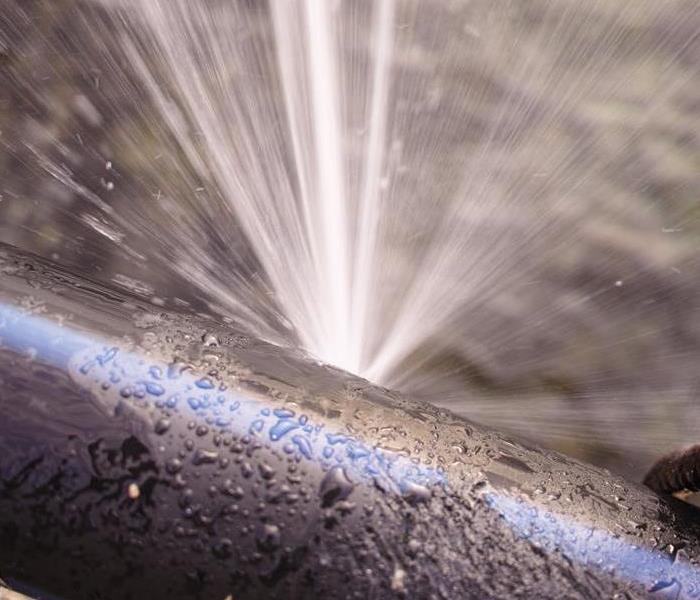 Save yourself the headache of a busted pipe by taking steps to prevent it.
Save yourself the headache of a busted pipe by taking steps to prevent it.
Did you know that your home’s water line can leak or break due to frozen water? Below-freezing temperatures cause water to freeze mid-flow through your home’s pipes. This can lead to a burst pipe or leaking water line. Also, septic tanks are more likely to burst when the dirt is frozen and snow is on the ground.
If you live in a location with hard water, sediment buildup in the water heater tank causes rust to develop. This rust is harder to get rid of during the winter.
Because of this, your family deals with contaminated drinking, bathing, and cooking water for months. These plumbing problems are a direct cause of winter’s harsh conditions. Sudden temperature drops, snowfall, hail, and other weather-related problems leave your home’s plumbing in a tough position.
Ice Dams can create problems for your property,
12/10/2019 (Permalink)
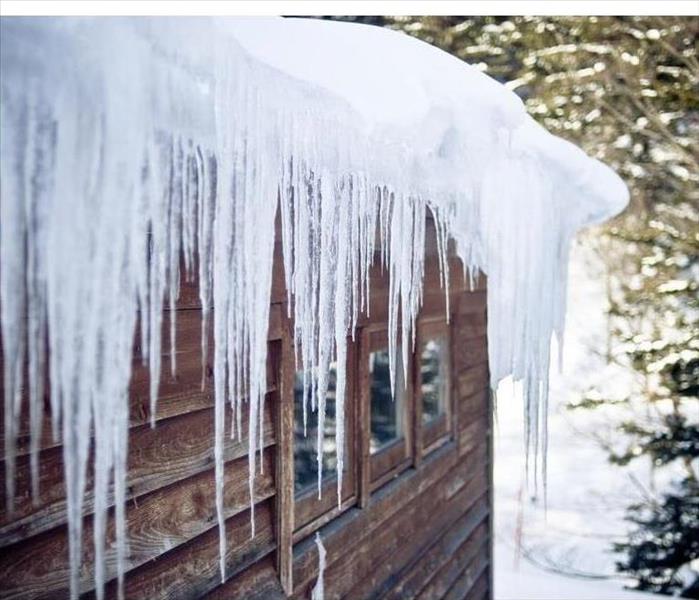 Don't let ice dams create problems for you.
Don't let ice dams create problems for you.
You never know when a winter storm may threaten to bring ice damage to your home or business. Ice storms are hard to predict and harder to deal with. You’re smart to take preventive steps to reduce or eliminate the risk of ice damage.
Of course, even the best laid plans to prevent ice damage may not eliminate all damage. The following steps will help you keep your repair costs down and allow you to keep your home or business as safe as from ice damage as possible.
Avoid what others do. Other people sometimes consider ice just a minor annoyance but ice can wreak major havoc to your home or business. Even small preventive measures can make a difference. If a winter storm is coming make sure you keep your windows shut, your water taps dripping, and your cabinets open. These steps can help prevent freezing and allow you to avoid burst pipes.
No more ice dams
When water freezes, melts, and then refreezes on the edge of your roof it can create an ice dam in your gutters and on the roof. Ice dams can cause water to leak into your home and damage ceilings, walls, insulation, and other areas. To prevent ice dams consider adding insulation to your attic. Keep your gutters down spouts clear. Be sure water drains at least 10 feet away from your home’s foundation. And make sure you insulate recessed lighting fixtures so they don’t heat up your attic. After a storm, if there is a large and heavy amount of snow (8 inches or more), remove it from your roof with a roof rake. Don’t use a regular rake, because you can damage the shingles and gutters.
Prevent ice damage from becoming water damage
Left untreated, ice can lead to major water damage. Water can quickly ruin your carpets and personal items. Water damage can also cause mold and make structural damage worse. Whenever you notice water on the floor or on your walls, make sure to call SERVPRO of Decatur/Forsyth (217)428-2371. We can quickly clean up any ice or water damage and get the area dried out to prevent or lessen the damage. Waiting too long gives the water chance to cause more problems, and you might even deal with more damage if the water freezes again.
STORM DAMAGE VS. FLOOD DAMAGE
11/11/2019 (Permalink)
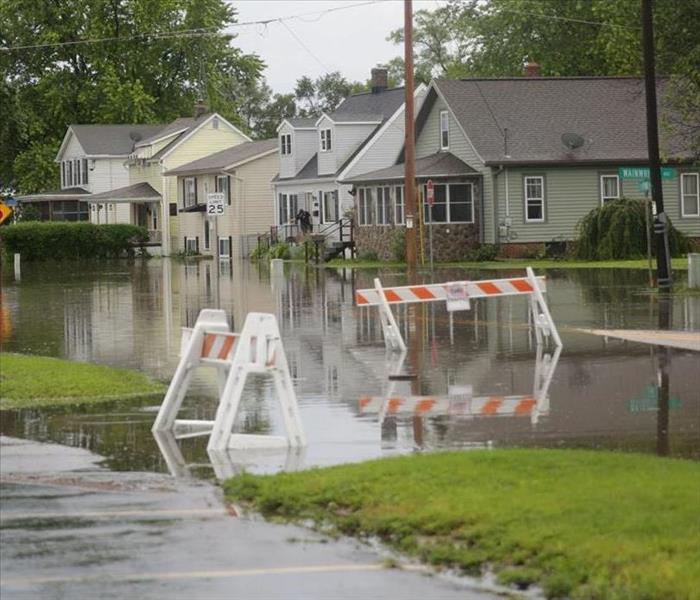 Know the difference between flood damage and storm damage!
Know the difference between flood damage and storm damage!
Heavy rain, golf ball sized hail and high winds invade your home or business. These events cause water damage inside your property. There is flooding on the ground floor, so is this considered flood damage? Or is it storm damage because the storm caused the flooding? You are not alone if you find this confusing.
Flood Damage
To an insurance company, there is a clear cut difference between water damage caused by a flood, and water damage caused by a storm. If you have flood insurance for your property, the following indicate that it will likely cover the damage:
- Your property and at least one other property (or two or more acres) are normally dry, but are suddenly and temporarily flooded.
- A natural source causes the flood waters, such as a hurricane storm surge or mudflow. Any other sudden accumulation of water rising up into your commercial property is considered a flood, including heavy rainfall that saturates and seeps up from the ground into homes or businesses.
Storm Damage
Storms cause a myriad of problems, not limited to water and wind damage. The following are common types of commercial problems caused by a storm:
- Heavy winds, rain or hail may crack or stress the windows, foundation or roofing material, leading to water getting in. When the water damage is caused by falling rain that does not rise up from the ground into your property, it is considered caused by the storm even if the result is flood water inside your business.
- The damage from winds, rain or other event only impact your business, not necessarily the surrounding areas.
Whether storm damage or flood damage ravages your property in Decatur, IL. storm and water restoration specialists are your first line of defense. Depending on the cause of damage and your specific policy, your commercial insurance may or may not provide coverage.
Before mitigation can begin you must locate the storm damage!
11/11/2019 (Permalink)
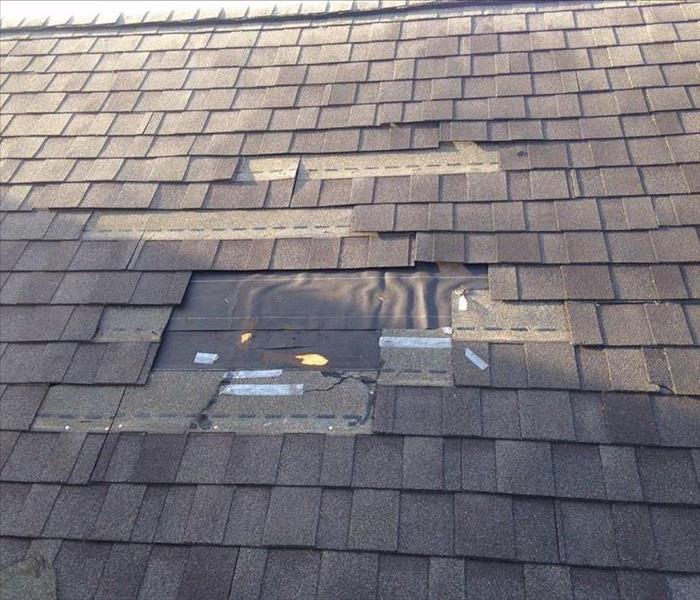 Roof repair is one of the first steps to getting your house back to normal!
Roof repair is one of the first steps to getting your house back to normal!
Locate the Issue
Hail and strong winds can easily cause roof damage. Before you begin mitigation, you need to inspect your roof. There are several issues to look for:
- Broken shingles
- Worn out or damaged flashing
- Clogged or dented gutters
Once you know where the damage is, you can make a more informed plan for taking care of it. This can also be helpful to water restoration specialists who fix your water damage so that they can board up the area or place a tarp over it until roofers can arrive.
Mitigate Inside Damage
Once your home has water damage from a leaking roof, you are on a time clock. Both damage remediation and roof repair have to happen fairly quickly. Timely mitigation of the waterlogged materials in your home helps to prevent secondary damage such as mold growth. Then, once the remediation process is finished, it is equally important to fix the roof so that the problem doesn't keep happening every time there is a storm in your area.
Fix the Roof
Professional contractors can assess the wind damage on your roof and give you an estimate of the cost of repairs. Broken shingles will probably need to be replaced. All joints may need to be reinforced, and any loose flashing needs to be reattached or replaced. Don't put off the repairs to your roof, or you may be revisiting the whole mitigation process all over again the next time a storm hits.
Wind and hail can tear up your roof in no time, leaving your home vulnerable. Fast roof repair and damage remediation are the keys to getting your home back to normal.
Prepare a winter supply kit this season
11/4/2019 (Permalink)
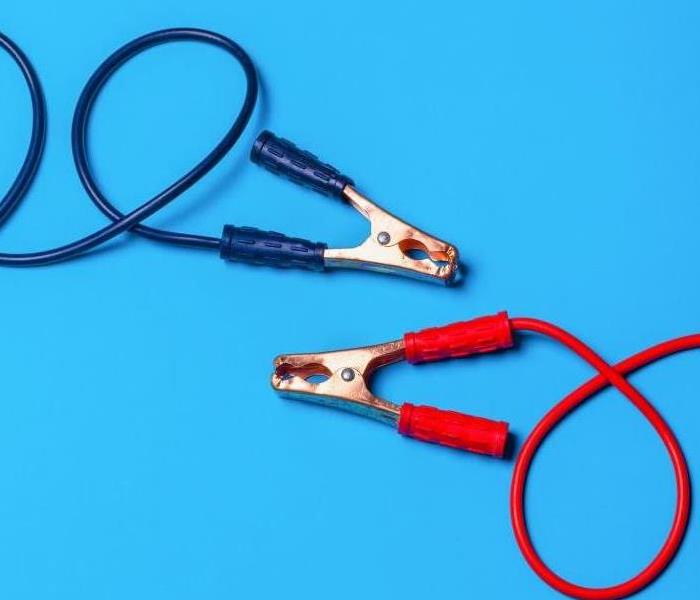 Get a head start on being prepared for this upcoming winter.
Get a head start on being prepared for this upcoming winter.
Create an emergency car kit.
It is best to avoid traveling in winter storms, but if travel is necessary be prepared with the items on this checklist:
- Cell phone, portable charger, and extra batteries
- Items to stay warm such as extra hats, coats, mittens, and blankets
- Windshield scraper
- Shovel
- Battery-powered radio with extra batteries
- Flashlight with extra batteries
- Water and snack food
- First aid kit with any necessary medications and a pocket knife
- Tow chains or rope
- Tire chains
- Canned compressed air with sealant for emergency tire repair
- Cat litter or sand to help tires get traction, or road salt to melt ice
- Booster cables with fully charged battery or jumper cables
- Hazard or other reflectors
- Bright colored flag or help signs, emergency distress flag, and/or emergency flares
- Road maps
- Waterproof matches and a can to melt snow for water
Be safe during storms with these helpful tips!
10/17/2019 (Permalink)
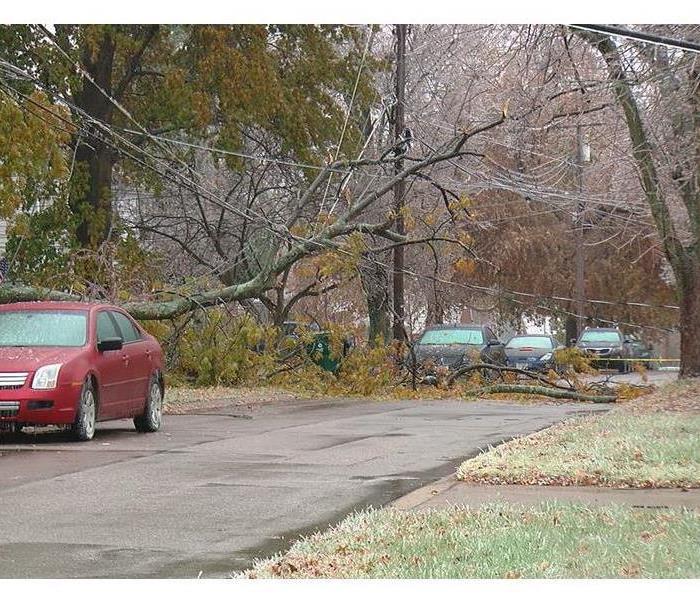 Be safe during and after a storm.
Be safe during and after a storm.
Be Prepared
When a severe storm is approaching, tune into a local TV or radio broadcast covering the storm and follow evacuation orders, if they are issued. Check your emergency supplies and make sure you have enough water for everyone in your home, typically 1 gallon of water per person, per day for at least 3 days. Fill up your bathtubs with clean water. Turn your refrigerator and freezer up to the maximum setting so your food will stay cold for as long as possible in the event of a power outage. If you have storm shutters on your windows, make sure they are closed and secured. If not you can use pre-cut plywood to cover exposed glass. To prevent damage from flying objects, bring outdoor furniture, tools, pots and toys in from outside. Secure important documents, photographs and other valuables in a waterproof and fireproof case.
Power Outage
During an outage, Safe Electricity recommends turning off electrical appliances and unplugging major electronics, including computers and televisions. Power sometimes comes back in surges, which can damage electronics. Your circuits could overload when power returns if all your electrical items are on. Leave one light on to indicate that power is back on. Wait a few minutes and then turn on other appliances and equipment—one at a time.
If you use a standby generator, take proper safety precautions. Always read and follow all manufacturer operating instructions. There should be nothing plugged into the generator when you turn it on. This prevents a surge from damaging your generator and appliances. Operate generators in well-ventilated, outdoor, dry areas. Never attach a temporary generator to a circuit breaker, fuse, or outlet; plug items into the generator once it’s operating.
Permanent generators should be wired into a house by a qualified electrician and include a transfer switch to prevent feeding electricity back into overhead lines, which can be deadly for linemen.
To help you get through, have a storm kit prepared. Keep the kit in a cool, dry place, and make sure all members of the family know where it is.
Be aware of powers lines after a storm.
9/26/2019 (Permalink)
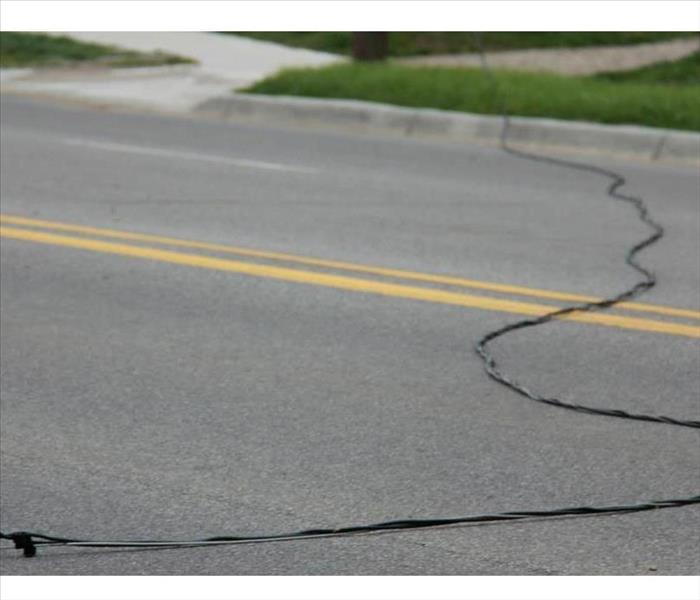 Contact your local power company if you see a downed power line!
Contact your local power company if you see a downed power line!
Contact your electric utility to report the outage and use caution if venturing outside after a storm:
- Just because power lines are damaged does not mean they are dead. Every downed power line is potentially energized and dangerous until utility crews arrive on the scene to ensure power has been cut off. Downed power lines, stray wires, and debris in contact with them all have the potential to deliver a fatal shock. Stay far away and keep others away from downed power lines.
- Never enter a flooded basement if electrical outlets are submerged. The water could be energized.
- Do not turn power off if you must stand in water to do so. Call your electric utility and have them turn off power at the meter.
- Before entering storm-damaged buildings, make sure electricity and gas are turned off.
- Do not use water-damaged electric appliances, electronics and other items before having them inspected and properly restored. Electric motors in appliances should be cleaned and reconditioned before use. It may be necessary to replace some appliances and electronics.
- If you clean-up outdoors after a storm, do not use electric equipment in wet conditions.
- If you are driving and come across a downed power line, stay away and keep others away. Do not drive over it, as snagging the line could pull a pole and other equipment to the ground. Contact emergency personnel or your utility company to address the downed power line.
- If you come in contact with a downed power line, do not leave the car. Wait for utility and emergency professionals to make sure the power line is de-energized before exiting the car.
Storms damage can lead to a water damage in your home.
9/18/2019 (Permalink)
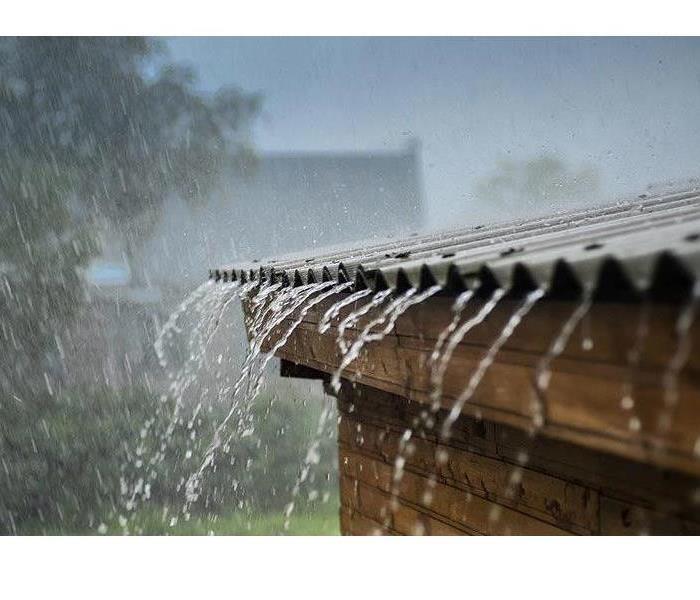 Know the causes of water damages!
Know the causes of water damages!
Water damage is a problem that most property owners dread. When it rains heavily or snow melts quickly, the risk of this type of damage increases. Water can cause thousands of dollars’ worth of damage by damaging wood furniture, upholstery, electronics, household appliances, and plumbing equipment. Water damage also increases the risk of mold growth, which is a very expensive problem to re mediate. Hiring a water damage restoration company can make the cleanup process easier to handle, as these companies employ experienced workers who know the best ways to repair or replace damaged items and help with water damage cleanup.
Causes of Water Damage
There are several possible causes of water damage. Leaky dishwashers, clogged toilets, broken pipes, broken dishwasher hoses, overflowing washing machines, leaky roofs, plumbing leaks, and foundation cracks are just some of the possible causes of water damage in homes and businesses. Floods, heavy snow, and heavy rain are other possible causes of this type of damage and can lead to having water in basements. Too much water can lead to minor problems such as water in basement areas, or it can lead to the destruction of homes and businesses. Once a home or business sustains water damage, it is important to start the water damage cleanup immediately. Starting water damage cleanup as soon as possible increases the likelihood of saving water-soaked furniture, carpets, rugs, clothing, and other items.
We are here to help with any storm damage needs.
8/21/2019 (Permalink)
Violent weather such as storm damage can wreak havoc on buildings as well as vegetation. Wind damage can be a hazard to the structure of a building, by loosening the shingles or tiles on the roof. This can cause moisture such as rain and snow to infiltrate into the protective surface of the roof, which will result in the wood swelling and later on disintegration and becoming moldy. This outcome will lead to a sagging ceiling and further problems. Elements such as wind, rain, hail, and lightning can result in turning people’s lives upside down, this is why having a storm damage restoration service to help this type of emergency is a good option.
Here are some of the activities you can expect from the storm restoration service professionals.
- Whether it is a business or residence, the restoration company will come to your property and their trained experts will do a thorough examination of the interior and exterior of your building. This will help them discover the level of the damage. In many cases, the restoration company will discuss the renovation plans with you and your insurance adjuster.
- When everything is agreed upon, the work begins. Depending on what type of damage is present, this will determine the type of equipment the professional will use. In the case of flooding, they will use specialized pumps and vacuums to remove water from the affected areas.
- Generators will be brought in to operate their dehumidifiers and air movers so mold and mildew do not have a change to make matters worse. Using customized cleaners, the specialist will then disinfect hard surfaces and shampoo salvageable carpets as well as apply deodorant to combat any odors.
If contacted in time, a storm damage restoration company will be able to rescue your building from greater structural issues, by inspecting the roof and replacing the dilapidated areas. After sealing and renovating the roof, they will then address the ceiling and restore to its former condition.
As you can see, when you suffer from natural disasters, the storm damage restoration process is something the experts can handle.
Preparing your home and property for a storm is very important.
8/20/2019 (Permalink)
 Be Prepared
Be Prepared
Preparing your home and property for storm damage is important. Just about every region has some type of weather event that can cause damage. This essay will focus on hurricane damage, wind damage, hail damage, tornado damage, cold damage, heat damage and how to prepare for each.
While not as prolonged as hurricane winds, thunderstorm winds can also cause significant damage. As the storm approaches it is a good idea to secure as loose object in the yard. Damage can occur as the wind throws these objects at the home. Stay inside though if the storm is already hitting and you don't have time. As with hurricanes, significant damage is caused by fallen tree branches. Make sure tree branches are pruned and the weakest branches removed. If you have time, have the car protected in a garage if possible.
Hail damage is notorious for causing dents on cars and weakening roofs and shingles. If you have time before the storm hits make sure the car is placed in a covered area. After a hail storm, make sure no water is leaking through the roof. An accumulation of wind and hail damage can weaken a roof to the point that leaks develop. When the roof needs replacement consider getting a roof and shingles that better protect from wind and hail damage.
Tornado damage is the most difficult to prepare for since the winds are so extreme that destruction can be very severe even to even well build homes. When a significant tornado approaches the primary thing to do is to protect your life. If a tornado warning is issued or you have evidence a violent storm is approaching, go to center most point in the building such as a closet or bathtub on the lowest flood and while covering yourself crouch down as low as possible. Stay away from windows and listen to battery operated NOAA weather radio for updates. For a weak tornado the home can survive fairly well if it is well build and has a reinforced roof.
Cold and heat damage are preventable in many cases. If there is going to be a freeze make sure vegetation that can't handle a freeze is brought inside or protected so that the temperature will stay above freezing. Make sure to buy outdoor plants that will survive in the long term in your climate. Make sure to go through the necessary precautions to prevent pipes from freezing. If you leave the home make sure it stays heated. Pipes can freeze when the house is not heated and a big cold spell hits. Sun damage can occur to plants that require shade but get an excess of direct sunlight. Keep in mind which places around the home have the most direct sunlight and plant plants accordingly.
Be prepared for severe weather!
8/15/2019 (Permalink)
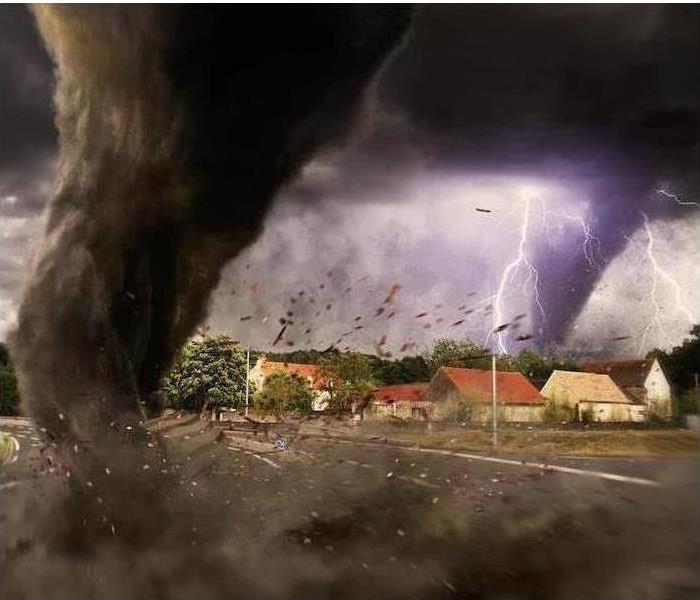 Be prepared!
Be prepared!
Watch vs. Warnings
With the severe weather season underway, now is a good time to go over the difference between tornado and severe thunderstorm watches and warnings. A WATCH means that the potential exists for the development of severe thunderstorms or tornadoes, depending upon the specific type of watch issued. In the case of a tornado watch, this DOES NOT mean that a tornado has been seen or even indicated on radar...it just means that conditions are favorable for the formation of tornadoes in thunderstorms. Similarly, a severe thunderstorm watch means that conditions are just conducive for the development of severe weather, and DOES NOT indicate that severe weather has been reported. While no immediate action on the part of the general public is required for the issuance of a watch, citizens should keep up to date on the current weather situation and be prepared to seek shelter if necessary.
A WARNING, on the other hand, requires more immediate action and should be taken seriously. A severe thunderstorm warning indicates that severe weather is imminent in your area or is already occurring (based on either human observation or doppler radar). The term severe refers to hail greater than or equal to 1.00" in diameter and/or wind gusts that meet or exceed 58 mph. Although these storms can also be associated with dangerous cloud to ground lightning or heavy rainfall that is capable of causing flash flooding, neither of these two items serve as criteria for a severe thunderstorm warning being issued.
Be prepared for any disaster with an emergency supply kit!
8/13/2019 (Permalink)
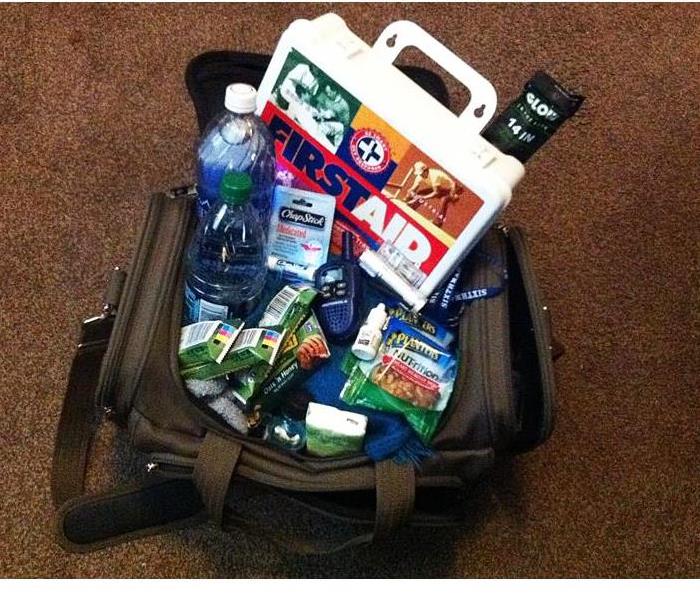 Be prepared!
Be prepared!
A disaster supply kit is a collection of basic items your household may need in the event of an emergency. You should have a kit at home and also at your place of work. At work, try to include a pair of comfortable shoes in case you need to walk to a shelter area. It's best to assume that in the event of an emergency or natural disaster, roads will be inaccessible by vehicles, and public transportation will be shut down.
Try to assemble your kit well in advance of an emergency. You may have to evacuate at a moment's notice and take essentials with you. You will probably not have time to search for the supplies you need or shop for them.
You may need to survive on your own after an emergency. This means having your own food, water and other supplies in sufficient quantity to last for at least 72 hours. Local officials and relief workers will be on the scene after a disaster but they cannot reach everyone immediately. You could get help in hours or it might take days.
Additionally, basic services such as electricity, gas, water, sewage treatment and telephones may be cut off for days, even a week or longer. Your supplies kit should contain items to help you manage during these outages.
Emergency Supplies
Water, food and clean air are important things to have if an emergency happens. Each family or individual's kit should be customized to meet specific needs, such as medications and infant formula. It should also be customized to include important family documents.
Recommended Supplies To Include In A Basic Kit:
- Water, one gallon of water per person per day, for drinking and sanitation
- Food, at least a three-day supply of non-perishable food
- Battery-powered radio and a NOAA Weather Radio with tone alert and extra batteries for both
- Flashlight and extra batteries
- First Aid kit
- Whistle to signal for help
- Infant formula and diapers, if you have an infant
- Moist towelettes, garbage bags and plastic ties for personal sanitation
- Dust mask or cotton t-shirt, to help filter the air
- Plastic sheeting and duct tape to shelter-in-place
- Wrench or pliers to turn off utilities
- Can opener for food (if kit contains canned food)
Storm Damage Scenarios
7/17/2019 (Permalink)
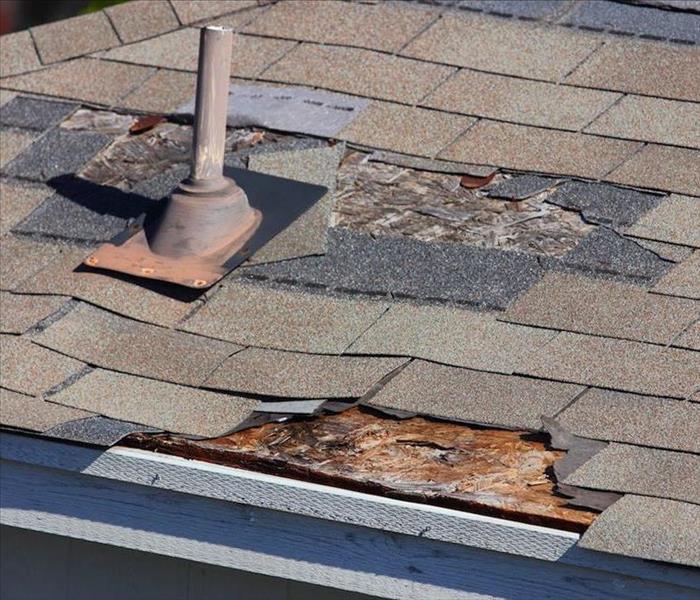 Take Action Quickly!
Take Action Quickly!
Severe storms can be frightening and dangerous, and safety has to be your first priority. If your area has seen major problems, be careful. If you think your home has been structurally damaged or if flood risk remains, don’t go inside until a professional says it’s safe. Spending a few nights at a friend’s house or in an emergency shelter is a small price to pay.
Once the disaster has passed, it’s important to assess the damage and get started with cleanup and restoration.
Here is a list of storm related damages your property may suffer from:
Hail Damage
Lightning and Thunderstorm Damage
Winter Storm Damage
Storm-related Flood Damage and Tidal Surges
High Winds, Tornadoes and Hurricane Damage
Hire a Professional
It’s vital to repair storm damage quickly, but the risk of danger is high. Before you try making repairs yourself, work with your home insurer and hire a fully licensed and bonded professional with credentials from the Institute of Inspection Cleaning and Restoration Certification (IICRC). Call SERVPRO of Decatur/Forsyth for help! We’re available for emergencies 24/7. (217) 428-2371
Difference between storm warnings and watches
6/10/2019 (Permalink)
It's important to stay aware of severe weather watches and warnings and to know how to react. A "watch" means that conditions are favorable for severe storms. Watches are typically issued for large areas and are in effect for several hours. When a "watch" is issued, you should be alert for the POTENTIAL for severe weather. You can proceed with your plans, however you should be "on the lookout" for changing weather conditions and be ready to move to a safe place if you hear thunder or see lightning.
A "warning" means severe weather is imminent or occurring, and action should be immediate. Severe thunderstorms are capable of producing damaging wind and/or hail. In our area, straight-line winds result in the majority of storm damage. Therefore, you should be ready to react when a severe thunderstorm warning is issued.
It should be noted that lightning occurs with every thunderstorm. There is no "lightning warning." This does not mean that lightning is not dangerous. In fact, lightning kills or injures just as many people as tornadoes in an average year. If you hear thunder or see lightning, it is possible for lightning to strike. Lightning can strike several miles from the thunderstorm, even while the sun is shining! The safest place in a thunderstorm is inside a sturdy building. Stay away from windows, anything that is "plugged in" and plumbing. A hard-topped vehicle is acceptable if you are unable to reach a building.
Summer Storms can be dangerous
5/23/2019 (Permalink)
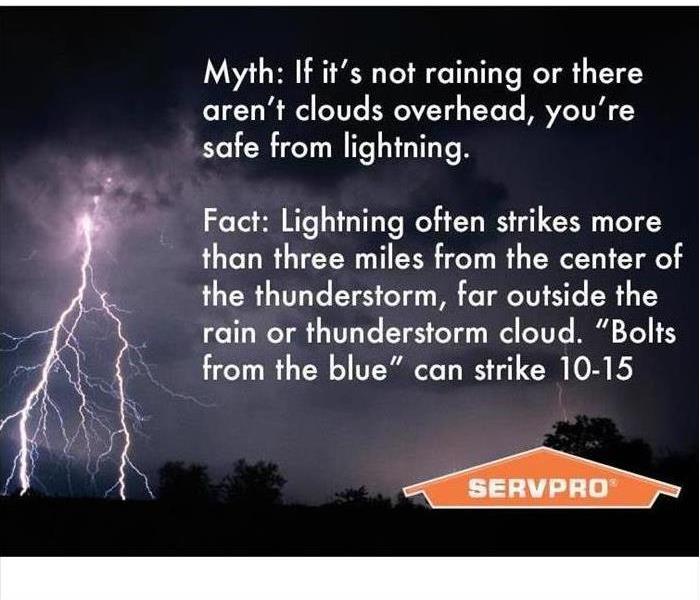 Be safe!
Be safe!
Summertime across Central Illinois means barbecues, festivals, sporting events, boating, hitting the beach, camping, and many other recreational activities. In short, summertime means a lot more people are spending a lot more time in the great outdoors. But summer is also the peak season for one of the nation's deadliest weather phenomena -- lightning. Lightning typically receives less attention than other storm-related killers because it does not result in mass destruction or mass casualties like tornadoes, floods, or hurricanes often do.
Lightning is one of the most erratic and unpredictable characteristics of a thunderstorm. Because of this, no one can guarantee an individual or group absolute protection from lightning. However, knowing and following proven lightning safety guidelines can greatly reduce the risk of injury or death.
Therefore, if you can hear thunder, you are within striking distance. Seek safe shelter immediately. Remember this lightning safety rule: WHEN THUNDER ROARS, GO INDOORS...and stay there until 30 minutes after the last clap of thunder. Do not wait for the rain to start before you decide to seek shelter, and do not leave shelter just because the rain has ended.
BE SAFE during a Thunderstorm!
5/13/2019 (Permalink)
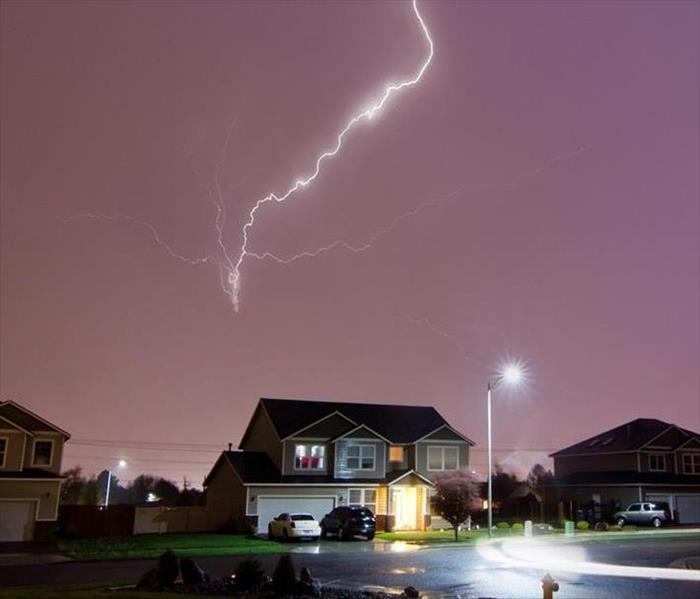 Take shelter in a safe place during a thunderstorm.
Take shelter in a safe place during a thunderstorm.
You can protect yourself from risk even if you are caught outdoors when lightning is close by.
Safety precautions outdoors
- If the weather forecast calls for thunderstorms, postpone your trip or activity.
- Remember: When thunder roars, go indoors. Find a safe, enclosed shelter.
- The main lightning safety guide is the 30-30 rule. After you see lightning, start counting to 30. If you hear thunder before you reach 30, go indoors. Suspend activities for at least 30 minutes after the last clap of thunder.
- If no shelter is available, crouch low, with as little of your body touching the ground as possible. Lightning causes electric currents along the top of the ground that can be deadly over 100 feet away.
- Stay away from concrete floors or walls. Lightning can travel through any metal wires or bars in concrete walls or flooring.
Although you should move into a non-concrete structure if possible, being indoors does not automatically protect you from lightning. In fact, about one-third of lightning-strike injuries occur indoors.
Safety precautions indoors
- Avoid water during a thunderstorm. Lightning can travel through plumbing.
- Avoid electronic equipment of all types. Lightning can travel through electrical systems and radio and television reception systems.
- Avoid corded phones. However, cordless or cellular phones are safe to use during a storm.
- Avoid concrete floors and walls.
Lightning strikes may be rare, but they still happen and the risk of serious injury or death is severe. So take thunderstorms seriously.
Learn and follow these safety rules to keep yourself safe from lightning.
It is TORNADO season in Central Illinois. Are you prepared?
5/7/2019 (Permalink)
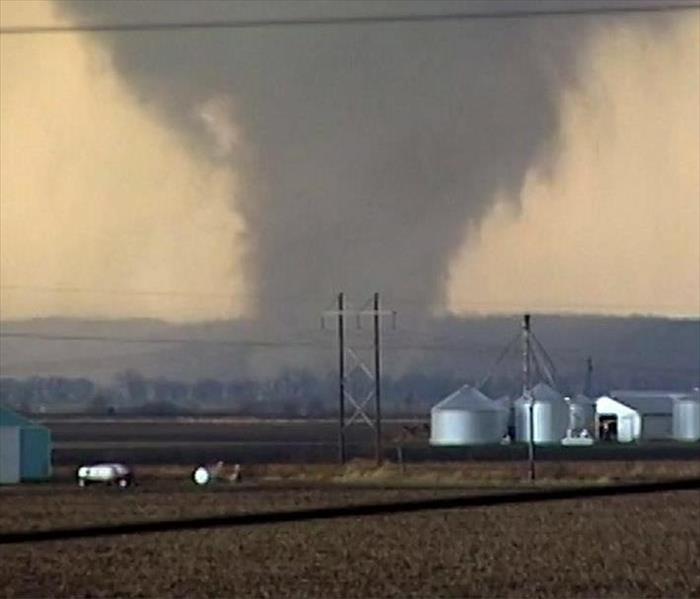 Tornadoes can touchdown ANYWHERE!
Tornadoes can touchdown ANYWHERE!
Prepare NOW
- Know your area’s tornado risk. In the U.S., the Midwest and the Southeast have a greater risk for tornadoes.
- Know the signs of a tornado, including a rotating, funnel-shaped cloud; an approaching cloud of debris; or a loud roar—similar to a freight train.
- Sign up for your community’s warning system. The Emergency Alert System (EAS) and National Oceanic and Atmospheric Administration (NOAA) Weather Radio also provide emergency alerts. If your community has sirens, then become familiar with the warning tone.
- Pay attention to weather reports. Meteorologists can predict when conditions might be right for a tornado.
- Identify and practice going to a safe shelter in the event of high winds, such as a safe room built using FEMA criteria or a storm shelter built to ICC 500 standards. The next best protection is a small, interior, windowless room on the lowest level of a sturdy building.
- Consider constructing your own safe room that meets FEMA or ICC 500 standards.
The next steps to take after a storm passes!
5/1/2019 (Permalink)
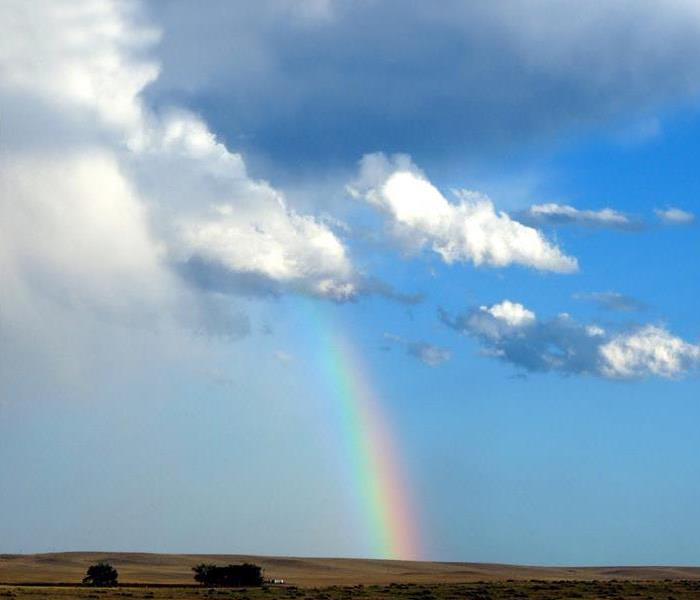 The calm after the storm!
The calm after the storm!
The Process of Storm Restoration after the storm passes
After assessment of the damage, a suitable restoration plan is hatched. Damage caused by a storm can run deep and not easy to unravel. However, a professional company can figure out by use of devices to probe and find out the affected areas. The first step of storm restoration is to clear and remove all the debris brought to your home during the storm. To avoid further wind damage and ice damage, the restoration crew will move to reinforce the weak structural walls and roof of the affected house helping it withstand ice dams and strong winds.
After these, a number of processes and services are undertaken. They include:
Water restoration and water removal using a flood pump
Water restoration is important if flood water found its way into your home causing flooding. Flood water can be as a result of heavy rains, river flooding, ground water, or burst frozen pipes. This flooding water can be removed by a flood pump. Stagnating water also need to be removed quickly using a flood pump to avoid growth of molds.
Hail damage restoration
In addition to water restoration, the hail damage restoration may also entail ice damage restoration. Hail storm can result in ice damming in your home. A professional company can remove the ice dams around and in your home by using effective equipment designed for this process. They can also fix the ice damage that follows a storm.
Roof repair
Roof repair is among the most common home restoration services needed after a storm. Roof damage can be caused by strong winds or a hurricane damage. Without repairing the roof, water restoration in the house will be in vain. Heavy hail damage and heavy rains can cause flat roofs to sink or cause seepage and a roof leak. Therefore, roof repairs entail not only sealing the roof but also reinstalling new tiles and reinforcing the roofing frames. Gutters and frozen pipes damaged from ice damming also need to be repaired.
Storm Remediation.
Any home restoration process after a storm ends with a storm remediation. This is done to avoid storm damage completely. You can do this by maintaining regular roof repair to avoid a roof leak that can enhance roof damage during the storm, fixing frozen pipes, and fixing windows and doors that are commonly affected by a storm. You will also need to stay updated on weather warnings and ensure your doors and windows are closed during a storm to avoid flood water coming into your home. You can also make trenches or install a flood pump around you home to prevent water from a river flooding from entering into your home. These trenches can also drain ground water away from your home.
Got STORM Damage?
5/1/2019 (Permalink)
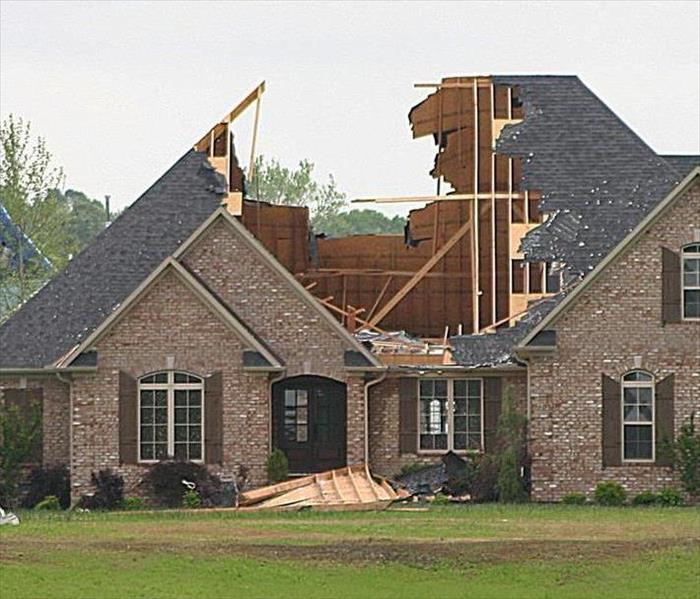 Storms can destroy a home quickly without warning!
Storms can destroy a home quickly without warning!
Why You will Need Professional Storm Damage Restoration after a Storm
Storms happen without warning causing severe destruction of property. Strong winds and flooding can cause damage to your home and business alike. As a property owner, you must deal with wind damage, flooding damage, hurricane damage, hail damage, and ice damage that are occasioned by the occurrence of a storm. All these events usually result in an expensive water damage. Water damage, especially from a storm, can be devastating. It can cause flooding, river flooding, and a rise in ground water levels. Flood water can cause serious property damage if it is not cleared and remediated fast enough. Under these circumstances, you will possibly need home restoration services.
Storm damage may also refer to the destruction resulting from strong winds. Additionally, a storm damage can also involve a hailstorm, and even a snowstorm. As such, the storm restoration process might involve managing ground water seepage, ice damage, water damage, hurricane damage, ice damming, river flooding, and wind damage restoration with other various services intertwined.
If you are looking for storm restoration services, it is important to look for a professional company that has a reputation of providing comprehensive home restoration services, repairs, and advice on storm remediation.
SERVPRO of Decatur/Forsyth is here 24/7
call us (217) 428-2371
Don't wait! When there is a damage act fast!
4/15/2019 (Permalink)
 Faster to any disaster
Faster to any disaster
Not many people know this but there are many reasons why experts recommend that you begin cleaning up and stabilizing a storm/water damage within 24 hours. Your safety comes first. Waterlogged homes are the perfect breeding ground for bacteria, mold and pathogens. 24 hours after a flood or water damage, toxic mold can begin to grow that puts your health and the health of your family members at risk. The odds of bad bacterial growth surge again after the 48 hour mark.
It's important that you call the cleanup specialists at SERVPRO of Decatur/Forsyth immediately to put a halt to any secondary damages caused by a Storm/water damage.
When a disaster strikes we are here to help!
Call us (217)428-2371
Tips on what to do before HELP arrives
4/10/2019 (Permalink)
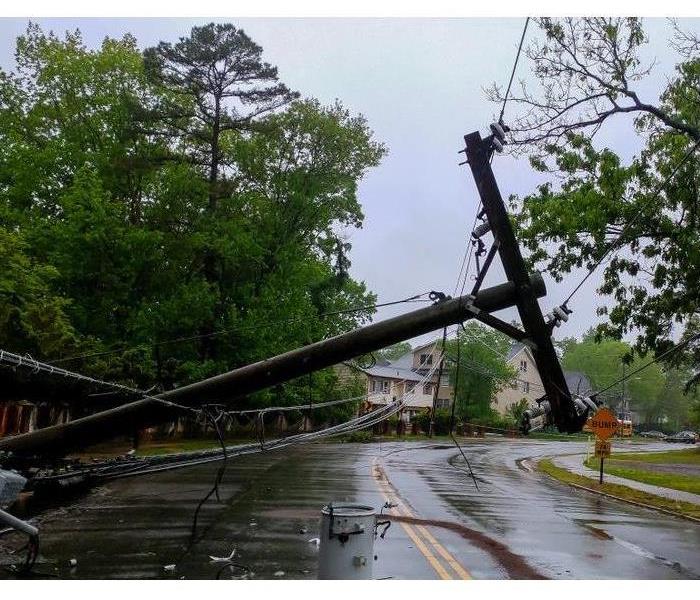 Call us when a disaster strikes! We make it "Like it never even happened"
Call us when a disaster strikes! We make it "Like it never even happened"
In the event of a storm damage, SERVPRO of Decatur/Forsyth wants our customers to stay safe and sound. Here are some important emergency water damage tips that SERVPRO encourages our customers to review:
Shut off your water source or contact a qualified person to do it for you.
Turn off circuit breakers when access to the power distribution panel is safe from electrical shock.
Mop up as much of the excess area as you can.
Place aluminum foil or wood blocks between furniture legs and wet carpeting.
Move paintings, art objects, computers, documents, and other sensitive valuables to a dry place.
Don't enter affected areas if electrical outlets, switches, circuit breakers or electrical equipment are exposed to water. You want to avoid electrical shock hazards.
Don't use your household vacuum cleaner to remove water; this could cause electrical shock or damage to the vacuum cleaner.
Don't turn on ceiling fixtures if ceiling is wet; and do not enter rooms where ceilings are sagging from retained water.
Have An Emergency? Call SERVPRO of Decatur/Forsyth
(217) 428-2371
Spring showers may bring more than May flowers....Be ready for flooding!
3/20/2019 (Permalink)
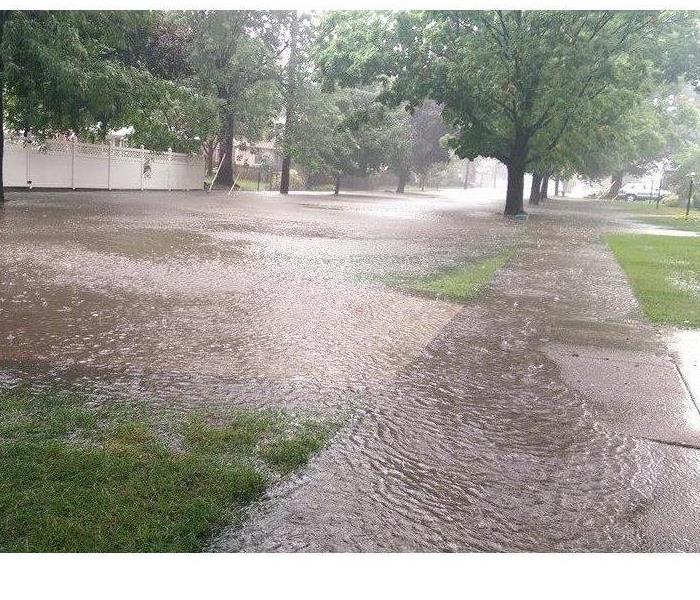 Flooding in the streets is common when we have a lot of rain. Be prepared!
Flooding in the streets is common when we have a lot of rain. Be prepared!
Spring showers can often lead to flooding conditions in central Illinois. These tips will help reduce the impact spring floods that my happen on your property.
Watch for Pooling Water
Look for places around your property where water pools, and channel it away from buildings. Make sure gutters and downspouts are clear of debris and they are directing water as intended.
Maintain Sump Pump
If you have a sump pump, check to be sure it is operational before water starts rising. Consider a back-up generator to ensure your pump works when you need it most. Contact your insurance agent to add coverage in case your sump pump fails.
Raise Storage Goods
Use shelving and/or pallets to keep storage items off the floor to reduce the impact of small floods. In many situations, raising boxes just a few inches will be enough to keep storage goods above the water line.
Cut Power if Necessary
As rising water approaches the level of electrical outlets, you risk having a live current flow through all the water. Cut the power if you can safely do so without standing in water. Otherwise, evacuate and contact an electrician to cut the power before you go back in for recovery.
Keep Storm Drains Clear
If you see water pooling around a storm drain, the drain may be clogged with debris. Clearing the debris will help keep the water flowing away from your neighborhood.
Be Aware on the Road
Be careful when driving during spring storms, especially when you hear flash flood warnings. Never drive into fully submerged roadway. The water surface will be at the same level as the pavement you can see. This view can deceive you into thinking the water is shallow because you cannot see how the road dips under the surface.
Act Fast
When a flood happens, you need to act fast to dry out any wet items, particularly structural materials like walls and flooring.
At SERVPRO of Decatur/Forsyth
We are Ready to Help
Call Today - (217)428-2371
Helpful tips to prevent flood damage to your property
3/20/2019 (Permalink)
We all know that prevention is the best medicine, but floods can happen at any moment from any number of causes. By completing regularly scheduled home maintenance and keeping an eye out for common warning signs, you can minimize the chances of a flood. However, nothing can give you a 100% guarantee of never having a flood. In that case, preparation is the best way to minimize water damage.
First, it’s a good idea to know your flood risk. Are you in a potential flood zone? Is your yard sloped away from your foundation? Knowledge is power so the more you know about how your home might flood, the more steps you can take to prevent it or minimize damage from it.
Using waterproof building materials is a great way to reduce damage from flooding and there are waterproof sealants and paints that can be applied to existing structures. In particular, there are many protective coatings for block or poured concrete walls which are common in basements.
Keep your valuables and irreplaceable items such as photo albums, yearbooks, and important documents on high shelves. Do the same with chemicals and paints. If they leak into flood waters, they could cause additional damage. Any items put away for storage should be in air and water-tight plastic containers. Never leave boxes or items on the floor; instead, invest in raised shelving units.
It may also be a good idea to raise appliances and electronics off the ground. Get wires and power strips out from behind your tv stand and organize them in a way that keeps them out of the flood danger zone. Put washing machines and dryers on cinder blocks or sections of lumber to reduce the chances that rising water levels will affect them.
If a flood does strike, turn off electricity, gas, and water lines and place buckets under active leaks. If the water is pooling slowly, soak up as much of it as possible to reduce the potential damage. Calling SERVPRO of Decatur/Forsyth at the first sign of a flood is the best way to reduce water damage. Our highly trained technicians will solve your immediate problems and ensure you don’t experience lasting effects or further damage.
We are here ready to help!
Give us a call (217)428-2371
Safety tips from a Storm Chaser! Storms can be DANGEROUS
3/20/2019 (Permalink)
 Be Careful!
Be Careful!
Spring is here! Here are some tips to keep you safe during this seasons storms.
- Be prepared! Get severe weather info before you hit the road. The Storm Prediction Center Website has regularly updated weather outlooks.
- Have a travel safety kit in your car. It should include food, batteries, heating packs, a prepaid cellphone that’s always charged (in case your regular phone dies), matches and water.
- Get the latest apps. Apple and Android phones both have helpful weather apps you can access while on the road. Search "radar" in your network’s app store.
- Radio is your friend. A charged NOAA weather radio is your best bet (they’re good for home, too); or at the very least, listen to local stations on your car stereo for updated warnings.
- Have an escape route. If you dare venture out in risky weather, make sure you have a backup plan and know the area’s roadways to get around the storm.
- Stop driving in hail. If you’re in a bad hailstorm, pull your vehicle over. If you continue driving, you’ll just add momentum to the storm and can blow out your windshield.
- Don’t stop under an overpass. Strong winds can be funneled through narrow spaces, such as under the freeway, and can even accelerate its speed.
- Stay in your car, unless you’re nearing a tornado. In most cases, you’re safest in your car. BUT if a tornado is bearing down, find the nearest ditch or low point and cover your head.
- Don’t try to outrun the tornado. If the tornado is moving side to side, across your field of view, you’re in a safe position. Don’t try to outrun a tornado, as you don’t know how fast it’s moving, how close it is or if it will change direction.
If a disaster does strike we are here to help!
Give us a call (217) 428-2371






 24/7 Emergency Service
24/7 Emergency Service












